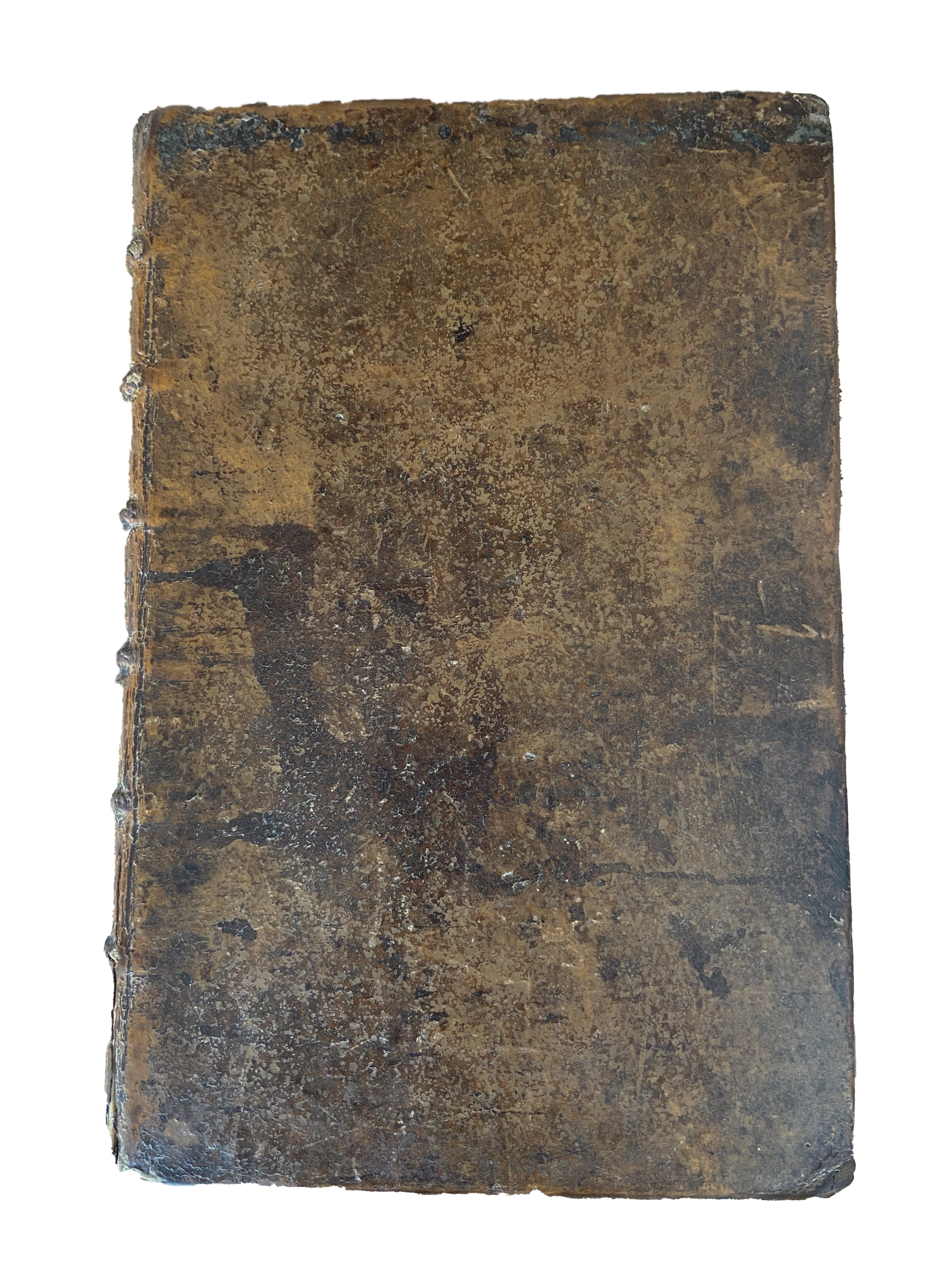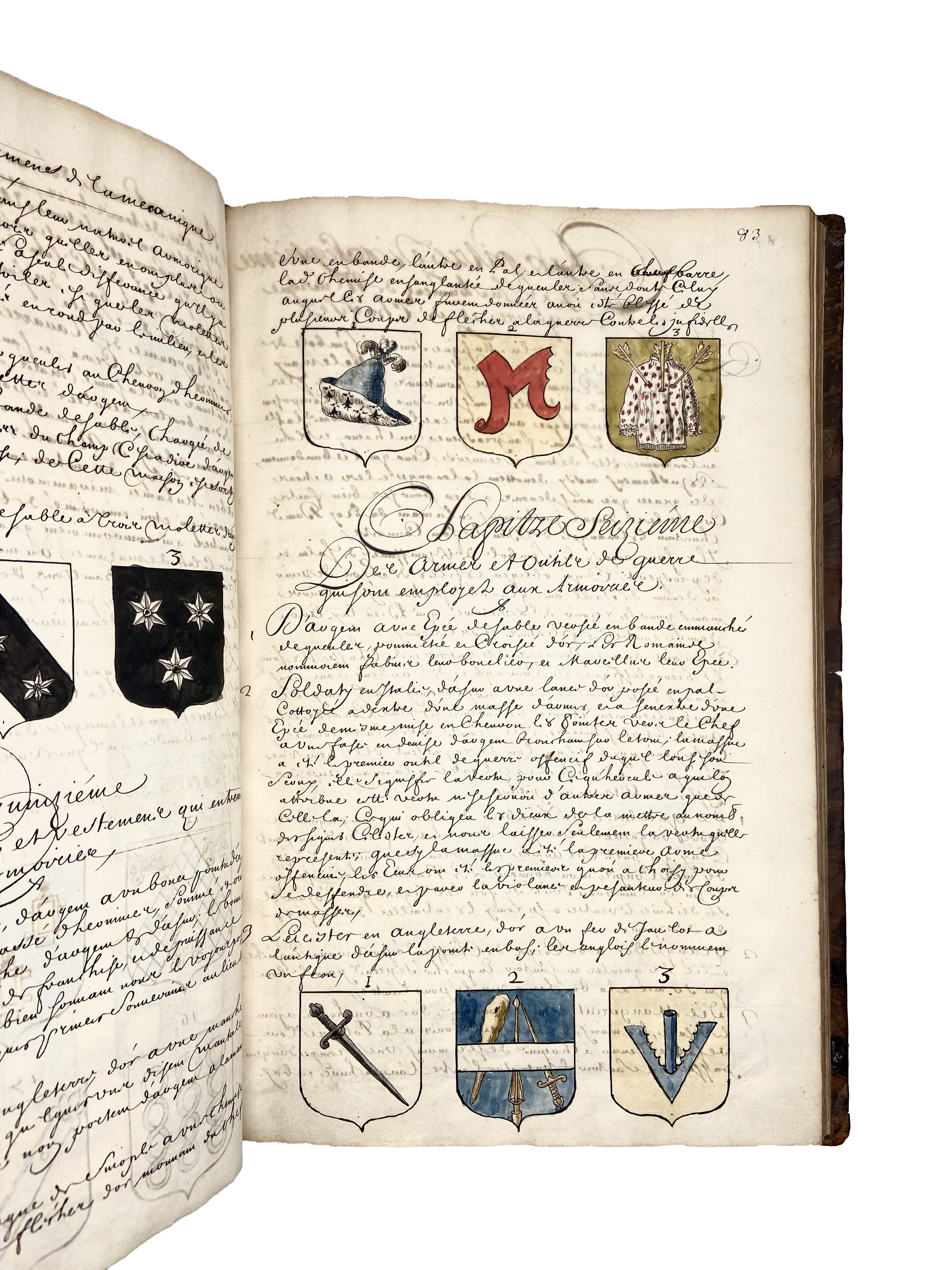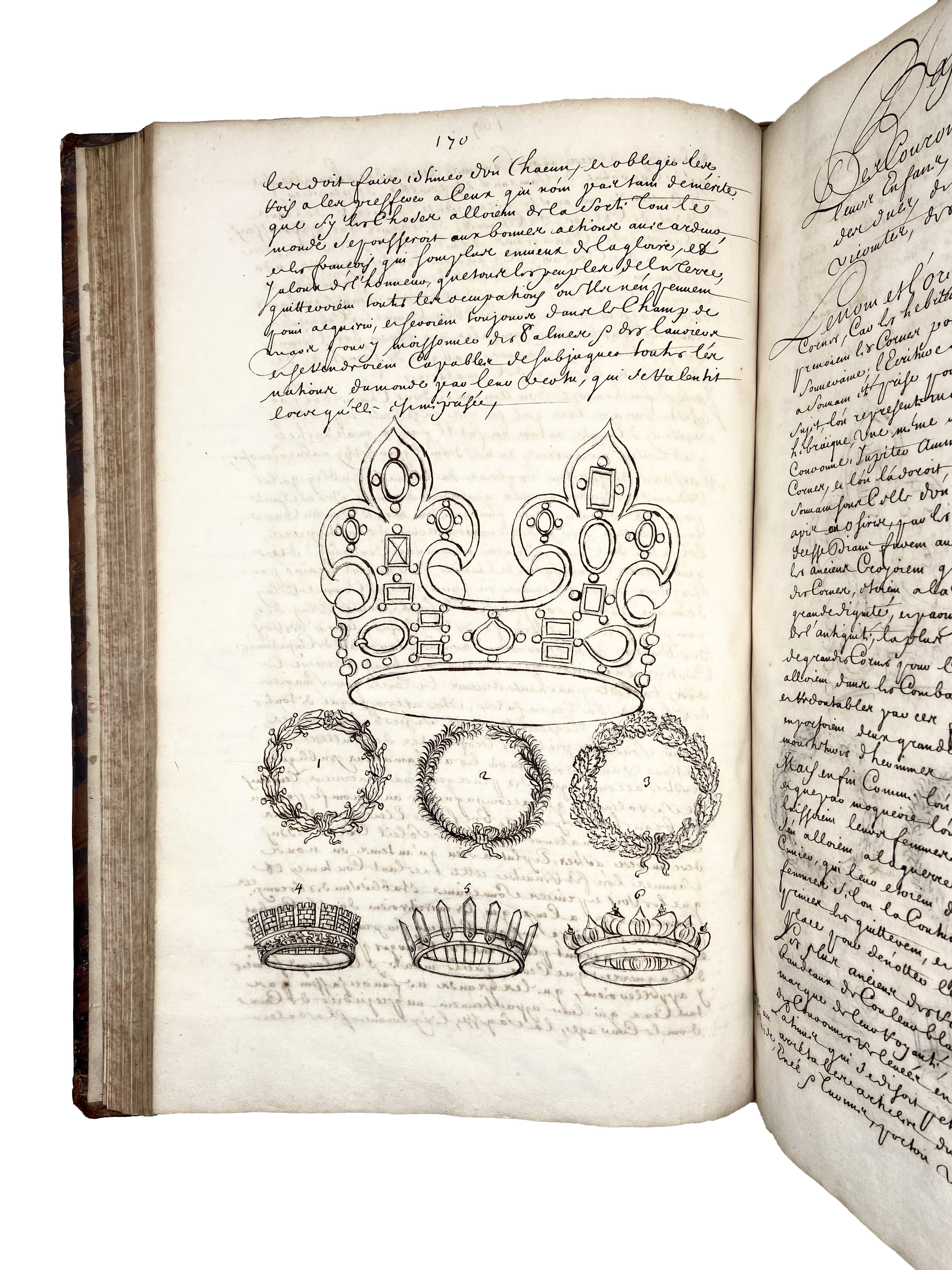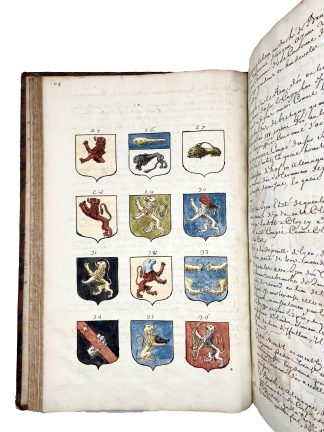VULSON DE LA COLOMBIÈRE.
LAVISHLY ILLUSTRATED
La science heroïque.
France, Manuscript, on paper, c.1660.£16,500.00
Folio. pp. [2], 185, [118] + 1 tipped-in leaf, 3 ll. blank, 4 pasted over. In French, black ink, occasional pencil, secretary hand, approx. 46 ll. per full page. Watermark: 3 circles within shield, two crossed branches, ‘P.F.’ (France, c.1650s-90s). 563 small shields, most skilfully hand-coloured, some pencilled in trick, 46 small crests, 31 crowns and 18 charges in trick, 11 full-page or smaller figures of funeral statues and 2 knights on horseback. Few ll. lightly browned, small worm trail at extreme blank gutter of final ll., the odd ink smudge. An excellent copy in contemporary French sprinkled calf, raised bands, spine gilt and gilt-lettered, corners worn, covers scuffed, couple of stains, small loss at head and foot of spine, upper joint split at tail. C19 armorial bookplate Gabriel de Lacger to front pastedown, ms ‘de Wulson’ in early hand on rear pastedown.
A deluxe, beautifully illustrated ms heraldic manual, produced in France c.1660, based on the ‘Science heroïque’ (1644) of Marcus Vulson de La Colombière (d.1658). To him is attributed the invention of the hatching system of tinctures, as well as the rediscovery and adaptation of the image of chivalry which would greatly influence C19 medievalism. Selections from ‘Science heroïque’ – with slight variations probably dictated by the patron’s taste – were crafted into this delightful reference book. Heraldry is the genre whereby the attraction and ‘fetish’ of the manuscript medium, and of hand-colouring, persisted longest into the age of print. The manual tackles the traditional heraldic matter, from the origins to the shields, the use of colours, quartering, impalement, patterns, emblems, charges, crests, crowns, and the rich vocabulary used to describe them. These are accompanied, mostly on facing pages, by hundreds of numbered shields illustrating specific examples. The sophistication and liveliness of the naturalistic devices (e.g., lions, goats, cockerels, wheels, fish bones, cats, dogs, devils, eagles, owls, bats, spiders, etc.) on numerous shields suggest the work of a skilled draftsman able to reproduce hundreds of printed illustrations faultlessly. Towards the end are the best drawings. These include 4 full-figure likenesses found on ancient monuments, explaining funeral heraldic symbolism (for princes, those who died in battle on the winning or the losing side, and those who died in prison), and two large equestrian portraits of Aymon de Salvaing (in 1505) and the Duc de Bourbon illustrating the medieval use of the ‘lambrequin’, a piece of cloth hanging from knights’ helmets, rendered in heraldic terms as ‘mantling’. The last few pages are devoted to French royal arms, and their sundry variations, with a dozen coats of arms sketched in pencil and left blank, as in the printed manual. A very attractive ms.
In stock







